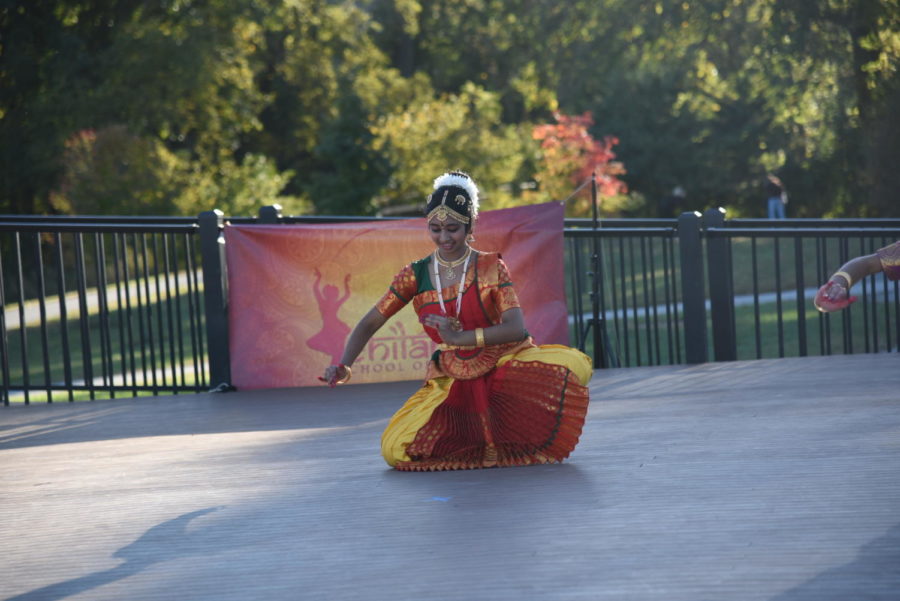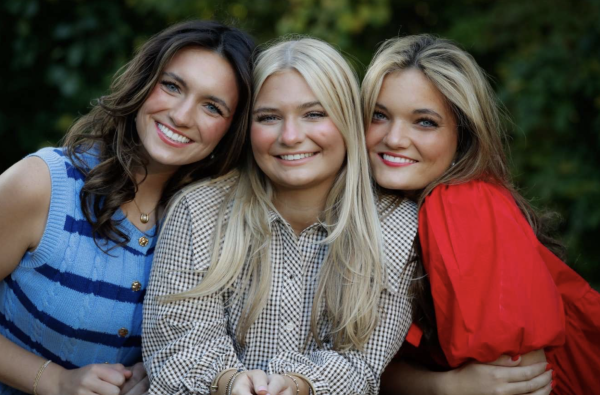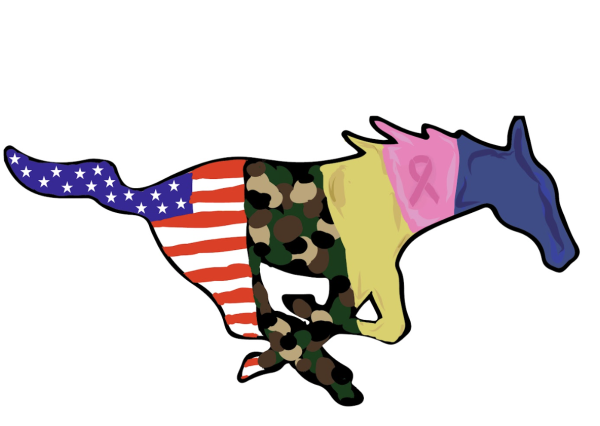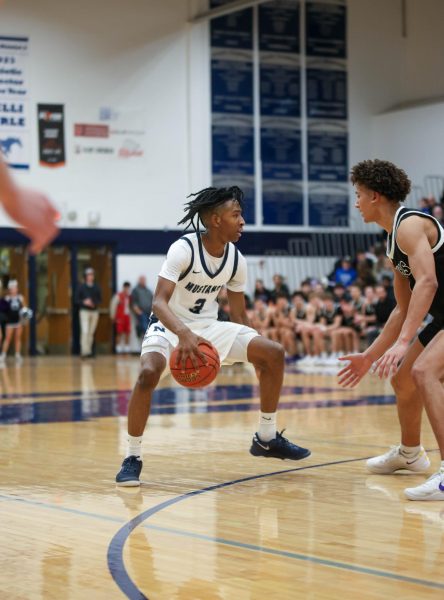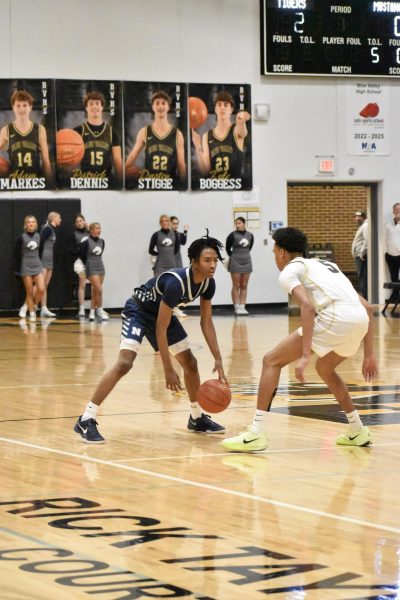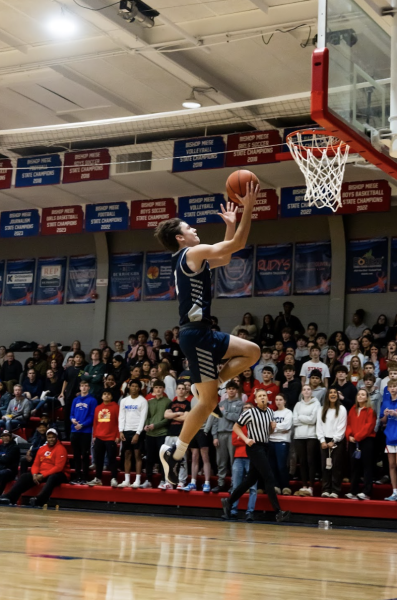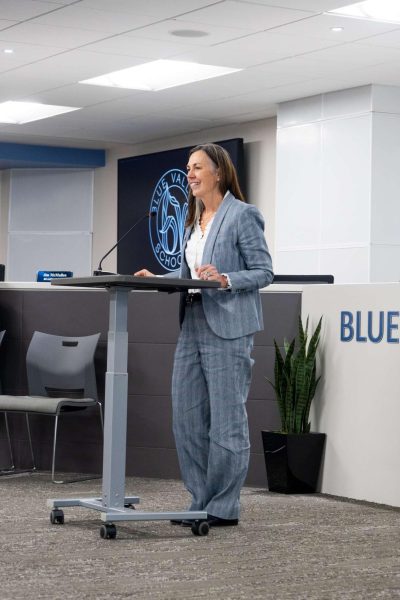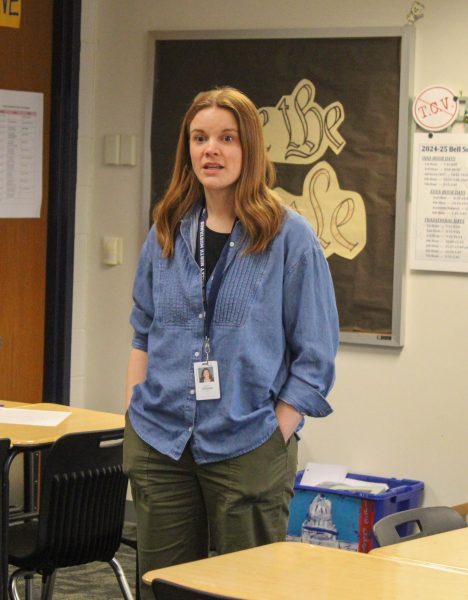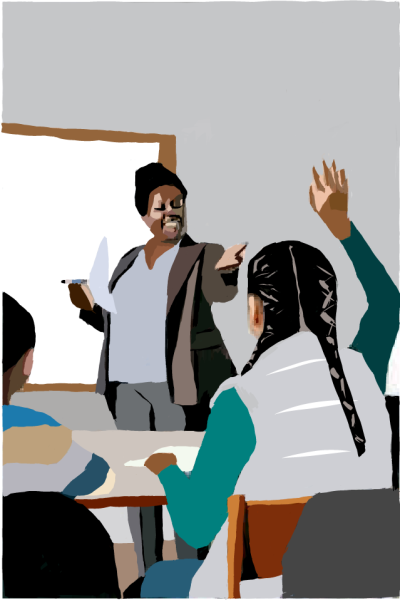21st Century Journalism: A Journey Through Bharatanatyam
Photo by Rishika Vunnama
Sainishitha Gudla dancing Bharatanatyam.
She was seven years old when she walked on stage for the first time. Her legs and hands started moving with precision and followed the rhythm of the music. She saw her friends around her, dancing and giving subtle hints of excitement. Then, thunderous applause bombarded the auditorium.
This was Sainishitha Gudla, a Bharatanatyam dancer and BVN student, at the start of her journey.
Doing Bharatanatyam was not her choice but something her parents had her try. She was indifferent towards it at first. The fact that she clung on to it was an unforeseeable but welcomed idea.
“Truly, I did not care for it. I had no interest. As a child, I tried many things like, for example, ballet, swimming, all sorts of stuff,” Gudla said. “So this was just another one of those things I was going to try, but I really did not have a passion for it.”
Her journey through dance has not been a solo one. She dances with her friends, and they are a steady pillar in her everyday life.
“When I first started dance in Pittsburgh, [Pennsylvania], I did it on my own. Then when I came to Kansas, I did it with Rishika, my interviewer; her sister, [Likhitha]; and my friend, Hamsini,” Gudla said. “Later on, that teacher moved away, and now I dance with Hamsini, and Rishika and Likhitha dance with another teacher.”
Gudla’s passion for dance is unparalleled. Janaki Riya Jagadam, a fellow dancer, said that Gudla devotes a lot of her time to the art and loves Bharatanatyam as a whole. The unusual thing is that she only became passionate during the COVID-19 pandemic.
“It was when I was taught this one specific dance called the ‘varnam,’ and it truly did spark something inside of me, and now I have this passion for dance that I probably will never let go of,” Gudla said.
Bharatanatyam is a unique dance, and it takes different skill sets to master it than most other dances do. It moves every part of your body, from eyes to toes, so grasping this art is difficult.
“Sai puts in the effort needed to be a growing, improving Bharatanatyam dancer. Once she understands the lyrics of her item, her bhavam [expression] is on point,” Hamsini Isukapalli, a fellow dancer and BVN student said. “She also excels at precise footwork and technical elements of classical dance. Her choreography skills are getting stronger as well. She once composed some jathis, which are step-oriented segments of a dance, in just a few days.”
Even if she is a well-accomplished dancer, the journey towards this level had its ups and downs. Sometimes there were more downs than ups.
“I did not get that support. In fact, I got a negative reaction once, and that almost caused me to quit,” Gudla said.
Not only emotions but physical injuries hindered Gudla from dancing. A few years ago when Gudla was dancing, she hurt her ankle.
“I have suffered from an ankle injury which to this day, I have not gotten fixed because no one understands what happened. I have gotten X-rays, gone to physical therapy; surprisingly, right now, it hurts too,” Gudla said.
The injury has affected her lifestyle and her dancing. Gudla’s ankle injury affects her focus and dancing ability.
“My injury makes it so that I can’t perform to my greatest extent … I will be thinking about my ankle, and how to not hurt it and therefore, I would not be focusing on the dance. Also, I was doing a specific dance called the shabdam when I hurt my ankle, so to this day, I cannot do that dance without getting distracted and I can never focus on that dance, ” Gudla said.
One of the reasons she stuck with dance is because of small comments from the people she loves that motivated her.
“They said I looked very nice. I was considered the ‘expression queen’ by many people including my teacher and my parents. Small comments like this really have me keep going with it though,” Gudla said.
Her friends were also a reason she kept on dancing. They were there for her during hard times.
“My friends are the reason I didn’t quit when that time came, that negative reaction. They were part of the support I got, they helped motivate me, and they also tied into that passion I have for dance,” Gudla said.
Dance is a calming activity for Gudla and other dancers, but achieving a connection with it is something only a few people can achieve.
“It’s that feeling when you dance,” Gudla said. “It’s such a sense of relief, and you just want to become one with the dance. You literally cannot think of anything else, your mind is blank. You connect with the music, and it’s just truly something else.”



